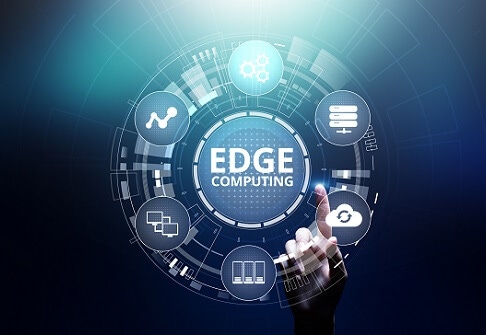Hewlett Packard Enterprise CEO Says Future is Edge-to-Cloud
The value of accessing data faster at the edge took center stage during keynote for HPE Discover 2021.

The relationship between edge computing and the cloud might further reshape how enterprises work with data, according to executives with Hewlett Packard Enterprise and other stakeholders.
In his keynote to kick off this week's HPE Discover 2021 virtual conference, Antonio Neri, CEO and president of Hewlett Packard Enterprise, talked up a future where data and edge-to-cloud architectures would stand at the forefront of innovation. “Data is the new currency that powers the digital economy,” he said. “Data is now our most valuable asset. I predict that data will show up as an asset in your balance sheet.”
During his keynote, Neri also shared conversations he had with Mary Barra, CEO and chair of General Motors, and Bob Legters, chief data officer of financial technology company FIS, where they discussed their respective transformation strategies.
The importance of data is growing beyond simply capturing it, Neri said. “It is about how fast we can extract value from it. The future belongs to the fast, and those who can act on their data the fastest will win.”
Over the last 10 years there was a profound change, Neri said, in the amount of data that could be collected and analyzed along with a change in the economics of technology. That includes seeing patterns in data not realized before, he said. Connected cars, for example, may offer potential value in cost and revenue benefits for mobility companies, suppliers, fleets, and tech companies that participate in the data marketplace. Neri cited stats from McKinsey that projected monetization of connected car data by 2030 could deliver up to $400 billion in annual incremental value across the mobility ecosystem.
The conversation with Barra about GM’s effort to transform beyond an automaker into a technology company pointed out possible benefits of harvesting data to improve the customer experience. Barra also spoke about the future of the auto industry with autonomous vehicles; all-electric, emissions-free cars; and connectivity. “Everything you can do in a car -- it’s really a software platform,” she said.
GM and Barra have been on this path for a few years now. In a prior appearance at CES, Barra talked up the company’s foray into all-electric cars and work being put into digital navigation. At Discover 2021, she spoke of the continued transformation of the auto industry including connectivity and driverless technology, seeing vehicles as hardware and software platforms, and how automated vehicles might lead to a safer world.
Neri said innovations being explored by automakers, such as unlocking new data and insights, may be of interest in other sectors as well. “The future is edge-to-cloud, not only in transportation but across every industry.”
While the past decade saw the rise of the cloud-first mandate, he said the next decade may be focused on using data everywhere across a distributed enterprise. Neri’s conversation with Legters offered a look at how FIS, like its peers, is taking a deeper look at handling data. “The increase in chief data roles is recognition that at the executive level, companies are realizing that their No. 1 asset, save their customers, is their data,” Legters said.
Investment in data is critical, he said, for business success, to be flexible, and respond to the market. Over the past year, FIS launched a new data ecosystem, Legters said, while its customers faced the challenge of getting access to and refining data to be useable and consumable. “That hasn’t changed much through the pandemic,” he said. “The demand for more real-time access has grown.” This fueled a need to understand data faster and respond quicker among FIS’s customers, Legters said.
The future may be data driven, he said, with a desire to access data regardless of where it is, refine it, and then use it in everyday transactions. “No matter what your infrastructure, the need to move to that edge-to-cloud environment is growing,” Legters said.
Related Content:
Making the Business Case for Edge Computing
10 Ways Enterprises Can Use the Edge
About the Author(s)
You May Also Like







